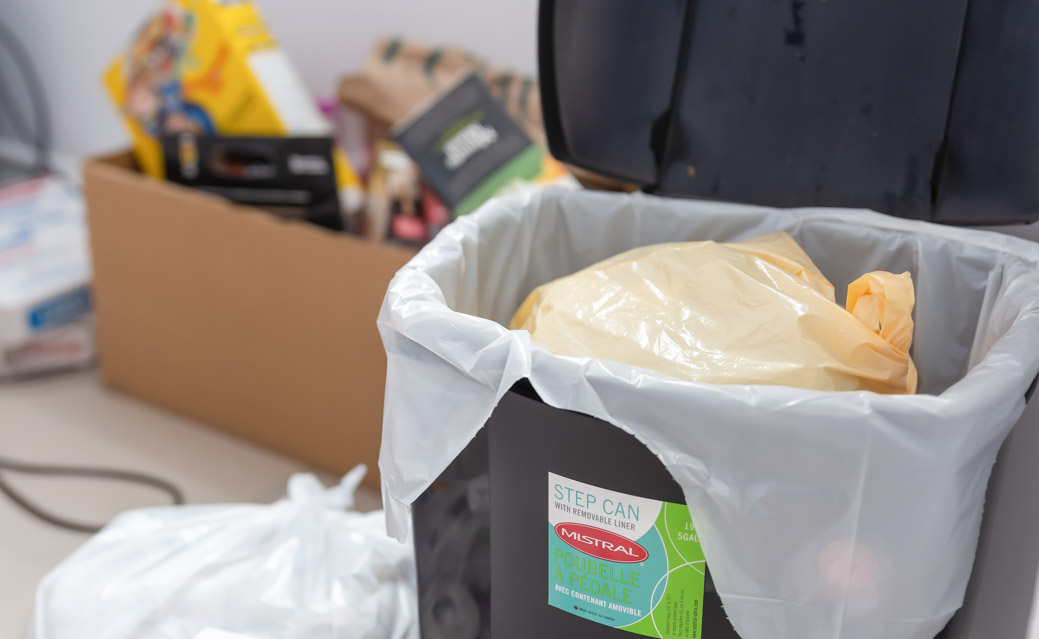Changing our habits around waste management is necessary for the sake of the environment and our health
Recycled plastics often end up in landfills and with the current rate of waste disposal, Canada won’t have enough room to store it all.
Canadians generate more than 30 million tons of waste every year. This emits around 27 megatons of carbon dioxide into the atmosphere and accounts for 20 per cent of national methane emissions. The economy has long romanticized the use of plastics for their affordability, malleability, durability, and convenience. As a result of our human consumption, the environment has taken a toll.
David Passmore is a sessional lecturer from the department of geology at the University of Toronto Mississauga (UTM). He currently teaches ENV320: Managing Our Waste, a course that addresses the “philosophical, social, and management challenges associated with waste in Canadian and international contexts.” Professor Passmore also explores how waste management has evolved over the years.
According to him, waste management has become a priority concern, on par with climate change and societal issues. This is because waste disposal significantly contributes to global warming. In fact, the waste sector is responsible for six per cent of greenhouse gas emissions.
Part of our failure to consider the severity of waste is that we’re unaware of what happens beyond the blue bin. Perhaps it could be that most of us would be happy not knowing, as it convinces us that we’re doing good. Of course, we are, but simply committing to recycling is not enough. “Only about nine per cent of the products we submit to recycling via our blue box actually ends up being recycled,” says Professor Passmore. So, what exactly happens after we’ve sorted out our waste into their respective bins?
Professor Passmore states that most of our “recyclables” end up back in landfills, and a small portion is even incinerated. That is partly because many of them end up being unsuitable for recycling—be it because of chemicals or their composition. With our current technology and financial means, this makes a small portion of plastics genuinely suitable for recycling.
Our efforts to reduce waste in Canada and globally have largely revolved around recycling. Professor Passmore notes that this trend is a return to the norm. “Make it, use it, and chuck it away: a mindset characteristic only of the 20th century,” he explains, adding that “rethinking our lifestyle” is needed.
Up until the 20th century, humans have always reused and recycled their products. After all, it was effective, and there’s no point throwing away something you can get more use out of. As Professor Passmore puts it, industrialization introduced the concept of throwing things away without thinking about it. In other words, we grew accustomed to the convenience of plastics.
Many European countries encourage citizens to reuse plastics. For instance, Professor Passmore shares that in restaurants, consumers pay a small deposit on their takeaway containers. These containers are designed to be re-used, perhaps for storage at home, or they can simply take them back to the restaurant for their next order. Similarly, UTM has been encouraging students to use OZZI 2GO containers when ordering food from the canteen. Yet, it feels like not enough students use it. This shows that many of us still need to change our lifestyle choices.
In addition, waste disposal in our oceans, beaches, and rivers is far too common. This is why American YouTubers Jimmy Donaldson (Mr. Beast) and Mark Rober launched #TeamSeas, a global initiative that aims to raise $30 million by the end of 2021 to remove 30 million pounds of waste from oceans, beaches, and rivers around the world—one dollar per pound. The #TeamSeas cleanup project is in collaboration with two non-profits, including The Ocean Cleanup, a non-profit foundation that aims to “clean up 90 per cent of floating ocean plastic pollution.”
Half of the funds raised by #TeamSeas will go to The Ocean Cleanup, while the other half will be given to their second collaborator Ocean Conservancy. Each of these non-profit organizations will be responsible for eliminating 15 million pounds of waste.
While Professor Passmore believes #TeamSeas is an incredible initiative that shows a lot of promise, he notes that microplastics remain a concern. Microplastics are minuscule bits of plastics that are not visible to the naked eye. These microplastics are indigested by marine animals, which contribute to the destruction of marine life. “I was really distressed to learn that even paper teabags use plastics in those bags too,” he elaborates. “[This ensures that the bag] retains its shape.”
Microplastics are a critical issue. While environmental concerns remain a priority, concerns about the impacts that they bring to our health are emerging. So far, the research is still ongoing. “It is estimated that the average person ends up ingesting five grams of plastics, corresponding to millions of microplastics weekly, which is roughly equivalent to a credit card,” notes Professor Passmore.
For him and many experts, one of the most important things we can do is incorporate sustainability into our circular economy. This will help change our mindsets. Professor Passmore stresses that our economy and our producers need to stop relying on plastics. He emphasizes that we must educate consumers about buying sustainable products. This could be done by subsidizing biodegradable substitutes—only then will our consumption of plastics decrease. We must keep expanding our range of biodegradable substitutes and change our “throw away when done” mindset.
Since most of our plastic waste ends up in landfills, this creates problems for the government. “Experts have said that Canadian landfills won’t suffice,” concludes Professor Passmore. “We’ll need 16 new landfills by 2050, given our rate of waste disposal.”
In 2016, the Ontario government imposed a goal of reaching zero waste by 2050 using a strategy that revolves around circular economy. This circular economy design involves the following: designing long-lasting and sustainable products; producing them to reduce greenhouse gas emissions; distributing said products to consumers; reusing and repairing products; and recycling. A key element of this scheme is that producers will be responsible for their products from the start to the end of the product’s life cycle. This means that they will be responsible for recovering the materials from their products, including packaging. Consequently, the amount of waste sent to landfills will decrease.
While we’ve long been aware that greenhouse gas emissions from waste are a catalyst for climate change, the newly discovered consumption of microplastics could have additional effects on our health. It is therefore of paramount importance that we migrate away from plastic consumption and choose sustainable products instead.
Features Editor (Volume 49) | features@themedium.ca —Maneka is a third year student completing a specialization in Philosophy with a minor in political science. Previously, she served as one of The Medium’s Staff Writer and Associate Features Editor. As this year’s Features Editor, Maneka hopes to raise awareness, shed light over current issues, and highlight student voices and organizations. When Maneka is not studying, writing, or working, you’ll probably find her binging on, or rather re-watching her favorite shows, listening to music, thinking about her dog, or likely taking a nap.


